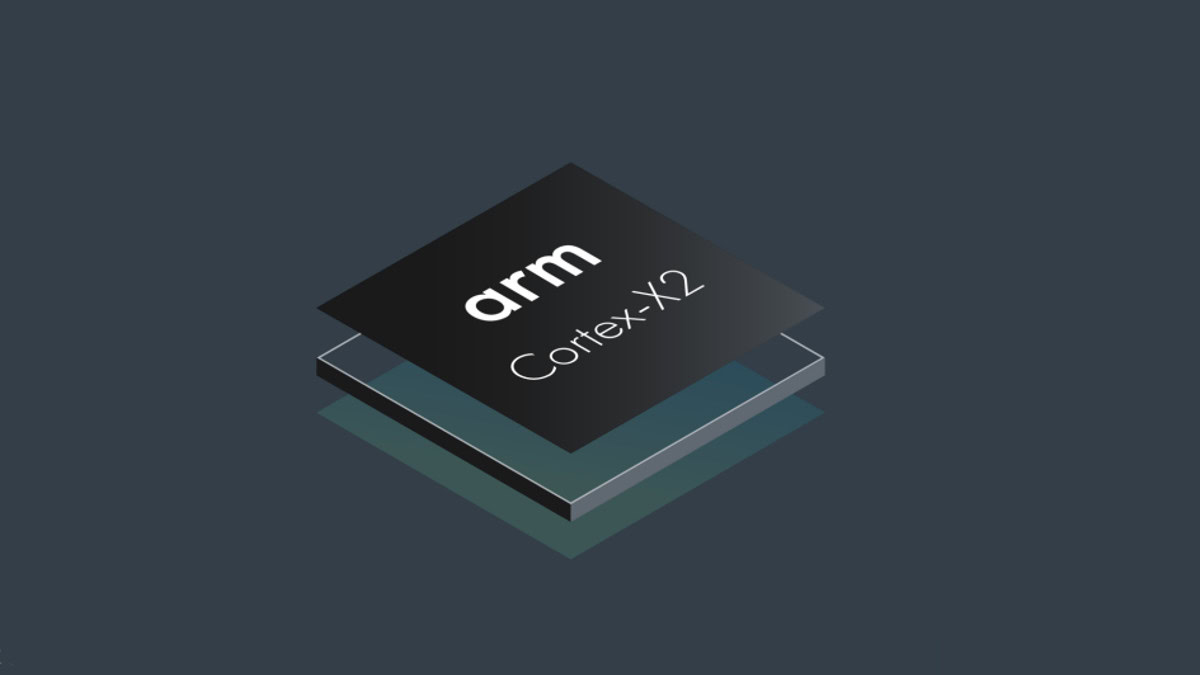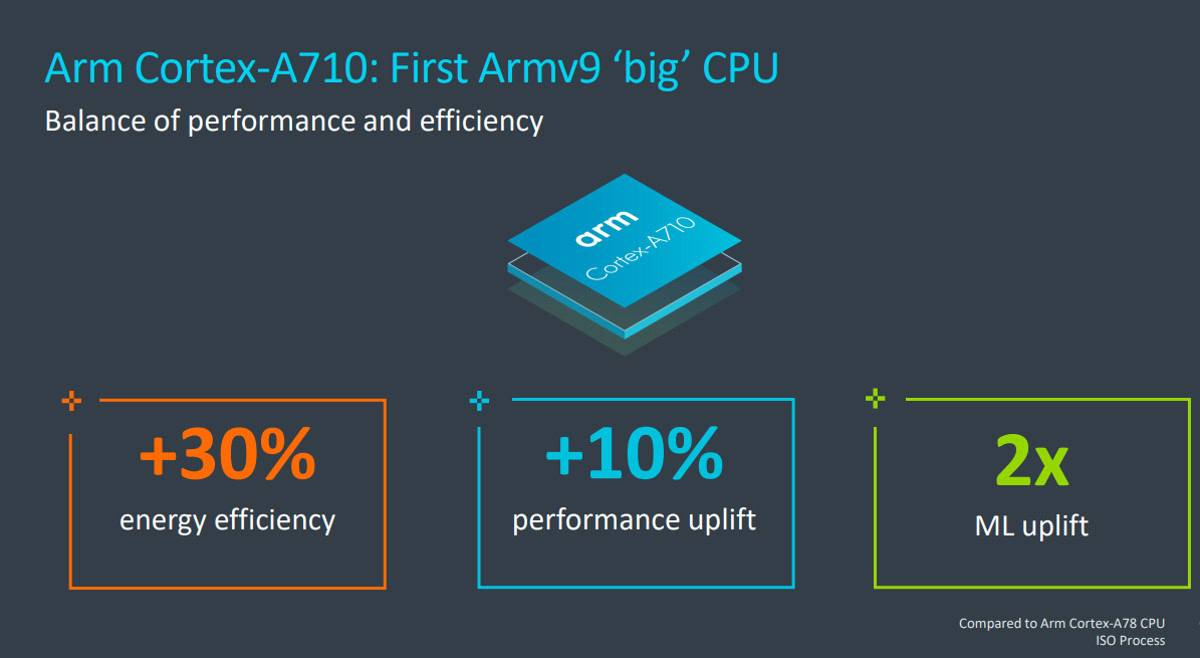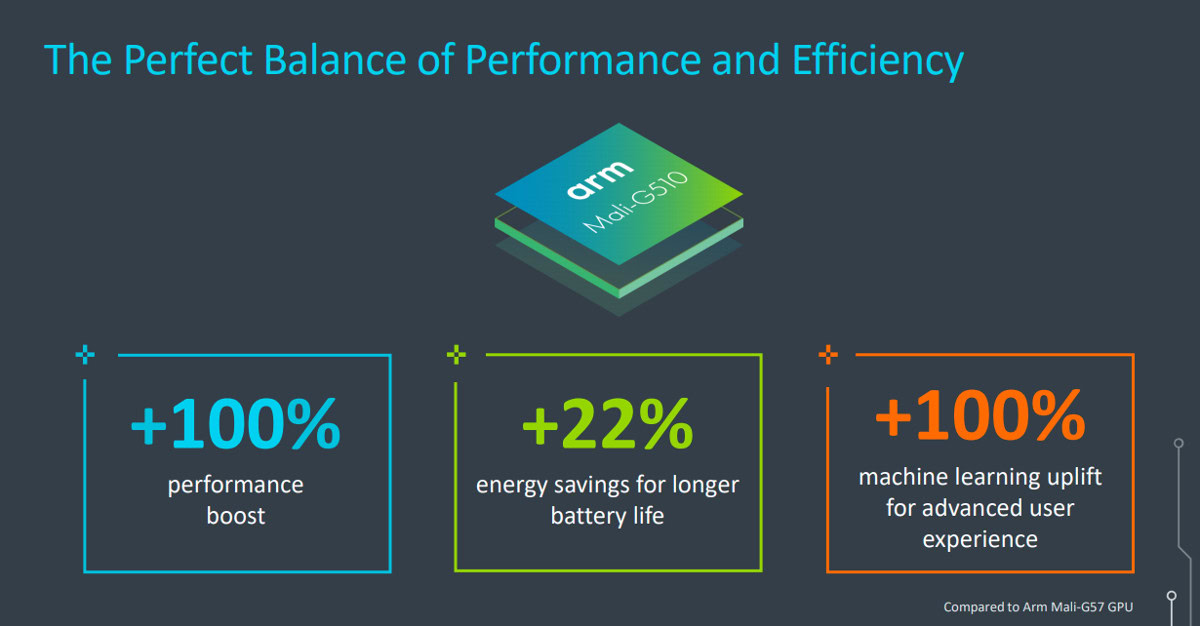Affiliate links on Android Authority may earn us a commission. Learn more.
Everything you need to know about Arm's 2021 CPUs and GPUs
Published onMay 25, 2021
Arm is arguably the most important company in the smartphone industry, with its architectures, CPUs, and/or GPUs used by virtually all smartphones worldwide.
The company has just announced a raft of new CPUs and GPUs, set to power next-generation smartphones, laptops, and more. Here’s everything you need to know about these new chips.
Deep dive: Arm Cortex-X2, A710, and A510 explained | These are the Arm GPUs you’ll see in 2022 devices
All of Arm’s new CPU cores have a new architecture

Arm announced three new CPUs, and the common thread among all of them is that they run Arm’s new v9 architecture. To give you an idea of why this is a big deal, the last time the company made such a big leap between versions was in 2011 with the switch to Arm v8.
The new architecture brings several improvements to the table. It enables much faster machine learning via SVE2 tech and brings better hardware security via memory tagging extensions. The latter was actually part of a previous architecture revision, but we didn’t see smartphone CPUs released with this architecture.
We finally get a new little core
Yep, there are three new CPU cores this time. And arguably, the most important CPU of the lot is the Cortex-A510. This is because the A510 is a long-overdue successor to the Cortex-A55 little core that’s been a staple in phones since 2018.
The new little core delivers a 35% performance improvement over the Cortex-A55, as well as a 20% boost to efficiency. In fact, Arm says the A510 is more powerful than the Cortex-A57 and within spitting distance of the Cortex-A73. You’re also getting a 3x uplift in machine learning performance, with the firm’s own slide showing that it out-lifts the Cortex-A78 in this regard (likely due to the new architecture).
More Arm coverage: Everything you need to know about Arm vs. x86
Why haven’t we seen a Cortex-A55 successor until now? Arm told Android Authority it considered releasing a successor sooner but chose to prioritize the Armv9-based A510 project instead. That project started back in 2016. However, the company did add that we would see “a far more regular cadence” of little cores being released and that you won’t be waiting another four years for another little core.
Arm also reckons the new little core is fast enough to handle a wider variety of tasks before deferring to the bigger cores. This suggests we could see even bigger real-world efficiency gains as a phone doesn’t need to fire up the thirsty big cores.
Cortex-X2 eyes performance over efficiency

The Cortex-X1 was announced last year as a performance-focused CPU core, appearing as the sole big core in the Snapdragon 888 and Exynos 2100. Arm has now released a successor dubbed the Cortex-X2.
Expect a 16% improvement in performance compared to the X1 on the same process and frequency. There’s no exact word on efficiency compared to last year’s X1, though, but an unmarked graph we saw showed that the X2 was indeed more efficient. In any event, Arm once again envisions flagship phones with a 1+3+4 CPU core setup, with one Cortex-X2 for heavy lifting.
The UK chip designer has revealed that it’s possible to offer eight Cortex-X2 CPUs together on one chipset, but this setup is only slated for laptops right now.
Cortex-A710: A link to the past

The Cortex-A710 picks up where the Cortex-A78 left off. That is, it’s the middle child of the Arm CPU cores. It’s not as powerful as the Cortex-X2, but it’s more efficient. Conversely, it’s not as efficient as the Cortex-A510, but it’s more powerful.
The chip designer says you can expect a 10% performance boost and a 30% efficiency gain over the Cortex-A78 on the same process. That’s a slightly bigger performance leap than the jump from A77 to A78, but a much bigger efficiency boost.
Interestingly, Arm says it intends to drop 32-bit support from its smartphone CPUs entirely in 2023. Two out of the three CPU cores announced today are already 64-bit only, with the Cortex-A710 being the sole CPU still offering 32-bit support.
Aside from serving as the middle core in flagship SoCs from most firms, we’re expecting the Cortex-A710 to be the big core in new mid-range chipsets.
Mali-G710 and G610: Flagship graphics at its core
Arm also revealed four GPUs, with the Mali-G710 being the flagship of the lot. The GPU delivers a claimed performance and efficiency boost of 20% and a gain of 35% for machine learning tasks.
The company also launched the Mali-G610, which is essentially identical to the flagship GPU. The big difference boils down to shader core count. A GPU gets the Mali-G710 designation if it has more than seven cores, while anything below that gets the G610 branding. For what it’s worth, the Mali-G710 tops out at 16 cores compared to 24 cores seen on the Mali-G78.
Speaking of the Mali-G78, it found its way inside HUAWEI and Samsung’s flagship SoCs this year. It’s unclear if HUAWEI will offer the G710 in its flagship SoC later this year due to the ongoing US sanctions. We’re guessing MediaTek will offer the new GPU in its next high-end processor.
Mali-G510 and G310: Cheap GPUs for the masses

Arm’s lower-tier GPUs also received some love, as the company announced the Mali-G510 and G310 graphics silicon. These GPUs pick up where the Mali-G57 and Mali-G31 left off, respectively. The Mali-G57 was used in mid-range and budget 5G silicon, and the Mali-G31 was often found in the likes of TV boxes. We’re expecting a similar pattern for the new GPUs.
More reading: The best phones for gaming in 2021
The Mali-G510 packs performance gains of 100% over its predecessor while also being 22% more efficient and offering a 100% boost to machine learning power. Arm says you can expect the Mali-G310 to deliver a 6x improvement to texturing performance and a 4.5x improvement for Vulkan performance. This was specifically compared to the Mali-G31, which launched several years ago. The firm also told Android Authority you can expect a two-fold boost to performance compared to the Mali-G31.
The Mali-G510 GPU is available with one to five cores, while the G310 is only available with one shader core. Both GPUs use the same fundamental tech as the more premium offerings, with this being the first time a Mali-G3X GPU gets the Valhall architecture. The GPUs also deliver Arm Fixed Rate Compression (AFRC), which is a visually lossless compression feature enabling significant bandwidth savings (60%) and performance gains (80%) for content like games and videos.